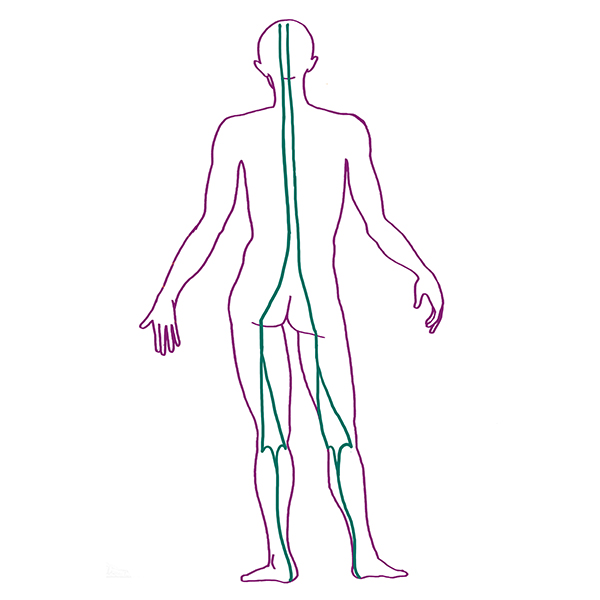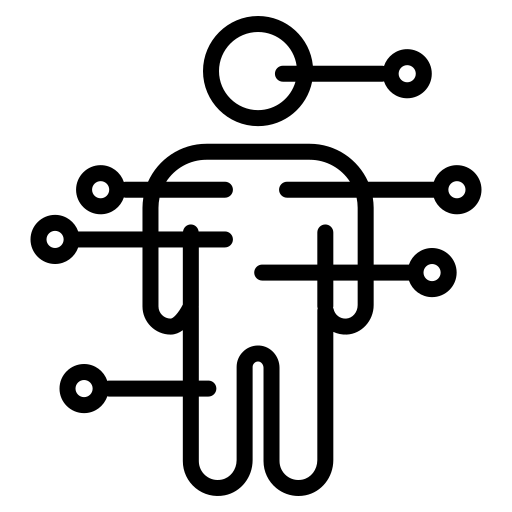
Working as Acupuncturists or healthcare practitioners, we are expected to know the answer to a plethora of things at our fingertips, especially if the question is as basic as how does this work. This article dives into various theories and mechanisms of action behind Acupuncture and will hopefully equip you with a few talking points when confronted with this question.
To be honest, I am not exactly sure how acupuncture works, but I have a few theories I stand behind, and most of all I know it does, as I have seen it with my own eyes and felt it in my body countless times.
Being a practitioner of this medicine, I am constantly in awe of the human body, the orchestra of hormones regulating our system, the neurochemicals sending signals, and the fascial system communicating amongst itself.
Sometimes I can feel the change happening within the tissues, observing the pulse and Qi response, other times I must rely on questions and their answers to understand the subtleties of changes and progression.
One of the more memorable quotes from my education was from an extremely talented professor of mine that would say “the mechanism of action is unknown.” Leaving us with tons of questions behind these thin slender needles.
Acupuncture in itself is a broad term and often encompasses modalities such as acupuncture, of course, acupressure, electro, plum blossom needle, and even moxa. The toolbox of the acupuncturist is vast and the modalities ( and the body) are so wise that even the most basic treatments are able to create positive change. (There have even been countless studies performed on “sham acupuncture” in which no underlying theory is utilized or “correct points” are used and beneficial changes were still experienced.)
Theories
There are many theories behind the “how” of acupuncture. Often depending upon who the audience is determines which theory I will share, and which “story I will tell”. There have been many scientific trials performed to understand the mechanism of action behind acupuncture, often offset by the positive outcome of sham acupuncture ( which in my option just further proves acupuncture benefits) but listed here are some of the most comprehensive theories.
The National Center for Complementary and Integrative Health states that acupuncture, even though not fully understood how it works, may have effects on the nervous system, direct effects on body tissues where needles are inserted, and nonspecific effects. Their website states. “In addition, studies have shown that acupuncture may alter brain chemistry by changing the release of neurotransmitters and neurohormones and, thus, affecting the parts of the central nervous system related to sensation and involuntary body functions, such as immune reactions and processes that regulate a person’s blood pressure, blood flow, and body temperature”.
This list is by no means exhaustive and multiple theories can, and most likely are in place during treatment.
Neurochemical Responses–
One theory behind how the insertion of thin filiform needles into one’s skin can create positive changes within areas not limited to sleep, digestion, fertility, pain, and anxiety, is that the needles stimulate the release of neurochemicals within the body and that much of the change is mediated through the nervous system. The neurochemical mechanism explains changes that take place within the central nervous system during acupuncture, changes that are seen within neurotransmitters such as endogenous opioids, neuromodulators, and other hormones.
Endorphin Based-
Acupuncture is able to promote endorphins and increase blood flow within the body, helping to increase circulation, healing mechanisms, and lymphatic flow. Endorphins are natural pain relievers found in the central nervous system, and acupuncture stimulates their release. Many attribute the healing power of acupuncture to the extra endorphins produced during the treatment.
Qi Theory–
This theory is based more upon ancient Asian ideas of balance and is constantly infused within the teachings of yin yang, meridians, and illness. The body’s Qi is both form and function and acupuncture is used to stimulate, tonify or reduce its activity within certain points that correlate to various organ systems. This is a complex theory and lays the basis of study within Traditional Chinese Medicine, and in my opinion is essential to understanding the “how: of this medicine.
Inflammatory Network–
Many people believe “localized acupuncture-mediated anti-inflammatory” effects are the key to how acupuncture works, and research has been performed to support this theory. One such study published in The Journal of Inflammation Research, explains that many diseases are linked to the underlying issues of chronic inflammation and that acupuncture indeed has anti-inflammatory impacts on multiple physiological functions. This particular study dives into “underlying mechanisms from acupoint initiation to signal termination within the target organs via neuro-immune regulation.”
Gate Control Theory for Pain (Segmental Effects)-
This theory is usually used to describe the effects of acupuncture on pain patterns. The gate control theory explains that pain may be modulated or changed by hyperstimulation analgesia created by acupuncture needles. The central nervous system regulates the pain response and a series of “gates” must be passed for the brain to perceive the pain. “Acupuncture helps in pain relief by stimulating the pain inhibitory nerve fibers, which lowers the pain input and therefore, relieves the pain. This can explain the effectiveness of acupuncture in short-term and acute pain conditions, explains one study performed by The Women’s Health and Research Center. Want to read more about this pain theory, check out this article by The Center for Integrated Health.
Autonomic Nervous System Regulation –
When the autonomic nervous system is activated through the stimulation of acupuncture, the body can show alteration in heart rate, heart rate variability, blood pressure, and respiration, and regulation can be seen in the effects on smooth muscle, sleep quality, urinary issues, and sweat rate. Being able to regulate the autonomic nervous system, can help to decrease stress as well as regulate a large variety of bodily functions.
Homeostasis Promoting-
Acupuncture is known to regulate the physiological state of the body. The World Health Organization recognizes almost 100 conditions able to be treated by acupuncture. While this isn’t necessarily an underlying “mechanism of action” behind acupuncture and more of an observation. The studies behind these 100 conditions prove that acupuncture is able to promote positive changes and healing within the body.
Discussion
Personally understanding how acupuncture works is not the main mission for me, I am more focused on observing how the body changes and heals when provided the environment, internally and externally. But I do feel like it is important to be able to explain how things are working to patients and other people interested in this medicine.
Knowing what type of language to use when explaining acupuncture can be very important, as using words like Qi, energy, and meridians, may turn someone off to experiencing acupuncture, and this language may be best to be introduced to them after they have a few experiences, while other are looking for a more subtle explanation of acupuncture. Meeting patients where they are in their healing journey is a very important lesson when working with someone’s health.
The western scientific community is just really starting to understand the importance of the fascial network, meanwhile Chinese medicine has known about it for millennia, as seen within the comparison between the Superficial Dorsal Line fascial network and the bladder meridian for example.
Thousands of years of practice and countless records, texts, and accounts of the benefits of acupuncture, withstanding the test o time is enough proof for it that it works, even though we may not know “why.”
So are you having trouble sleeping, experiencing digestive troubles, or acute or chronic pains? Go seek out a well-versed acupuncturist and see for yourself.

References
- https://bmccomplementmedtherapies.biomedcentral.com/articles/10.1186/1472-6882-6-25
- https://www.sciencedirect.com/science/article/abs/pii/S0025619613005132
- https://www.who.int/publications/i/item/978-92-4-001688-0
- National Center for Complementary and Integrative Health
- https://www.whria.com.au/wp-content/uploads/2018/03/How-Does-Acupuncture-Work.pdf
